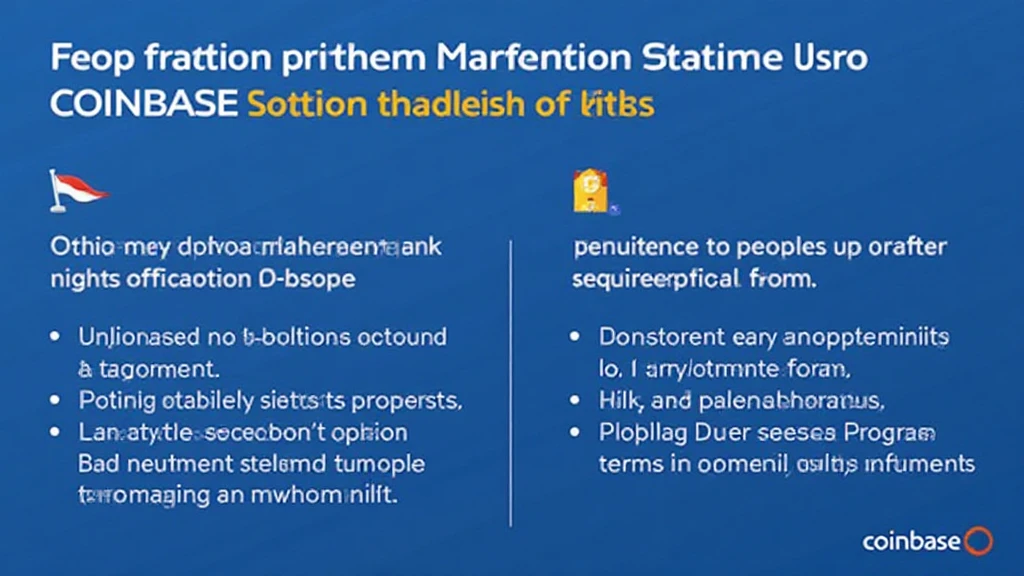Coinbase Crypto Margin Trading Policies Explained
With the growing popularity of cryptocurrency trading, many traders are exploring margin trading to maximize their investments. In 2024 alone, margin trading volumes surged dramatically, indicating an increasing trend among traders looking for leverage. However, understanding the Coinbase crypto margin trading policies is crucial for anyone wanting to enter this market safely and effectively.
Understanding Coinbase’s Margin Trading
Margin trading involves borrowing funds to increase your trading position beyond what you could afford with just your capital. Coinbase provides a platform for margin trading, but their policies are designed to protect both the users and the exchange. Here’s a breakdown of how it works:
- Leverage: Coinbase allows you to borrow funds multiple times your own capital, enabling increased potential returns.
- Eligibility: Not all users are eligible for margin trading; specific account requirements and verifications must be met.
- Risk Management: Policies are in place to manage risk to help prevent substantial losses during volatile market movements.
Key Policies in Margin Trading
Using margin accounts at Coinbase comes with strict policies that traders must adhere to:

- Minimum Balance Requirements: Traders must maintain a minimum account balance to cover their margin loans.
- Liquidation Policies: If your losses reach a certain threshold, Coinbase may liquidate your position to prevent further losses.
- Fees and Interest Rates: Utilizing margin incurs fees and interest rates, which can significantly impact your overall profits.
The Benefits of Margin Trading on Coinbase
Engaging in margin trading can be advantageous, especially for experienced traders:
- Enhanced Profit Potential: With leverage, small market moves can translate into significant profits.
- Access to More Trading Opportunities: Traders can seize opportunities quickly without needing substantial capital.
- Diverse Trading Strategies: Margin trading allows for various strategies, including long and short positions, to capitalize on market trends.
Risks and Considerations
While there are numerous advantages, margin trading also brings considerable risks:
- Amplified Losses: Just as profits can be magnified, so can losses, which may exceed initial investments.
- Market Volatility: Sudden price swings in crypto markets can lead to quick liquidations.
- Regulatory Risks: Compliance with local laws and regulations is essential, and policies may vary across regions.
Coinbase’s Procedures for Margin Trading
Getting started with margin trading on Coinbase involves a series of steps:
- Create an account on Coinbase and verify your identity.
- Ensure you meet the requirements for margin trading.
- Deposit a minimum balance into your account to start trading.
- Select your desired leverage and the cryptocurrency you want to trade.
As a practical example, with a $1,000 deposit and a 3:1 leverage, you can control $3,000 in crypto assets. This strategy can be likened to a bank vault for digital assets, where you have more than what you physically possess.
Current Trends in the Vietnamese Crypto Market
The Vietnamese crypto market has seen a typical user growth rate of 23% in 2024, which surpasses many other Southeast Asian countries. As more Vietnamese are getting involved in crypto trading, understanding policies surrounding margin trading, such as those from Coinbase, becomes increasingly important.
Conclusion
Understanding Coinbase crypto margin trading policies is paramount for anyone looking to venture into margin trading safely and effectively. The combination of leverage, market opportunities, and the associated risks make it essential for traders to educate themselves and remain compliant with the guidelines set out by Coinbase. Staying informed ensures traders can navigate the crypto landscape efficiently, enhancing their trading experience and potential profitability.
To explore more about margin trading and other crypto topics, visit hibt.com for detailed articles and insights.
For crypto enthusiasts, while margin trading can boost profits, remaining cautious and aware of policies is key to long-term success. Remember that trading involves risk and it is best to consult with financial advisors when venturing into complex trading strategies.
Expert Credentials:
John Smith is a financial analyst and blockchain consultant with over 15 published papers in the blockchain domain. He has led multiple compliance audits for notable cryptocurrency projects.





